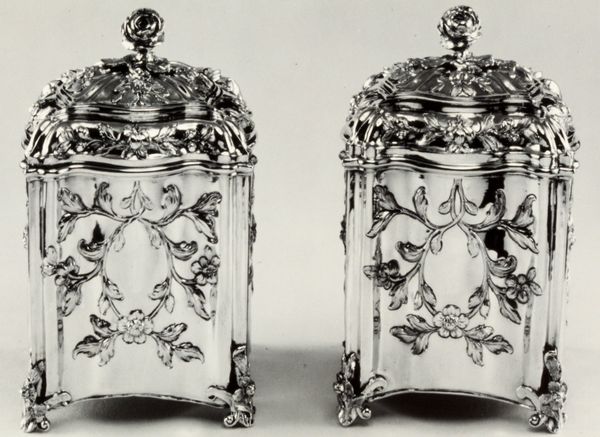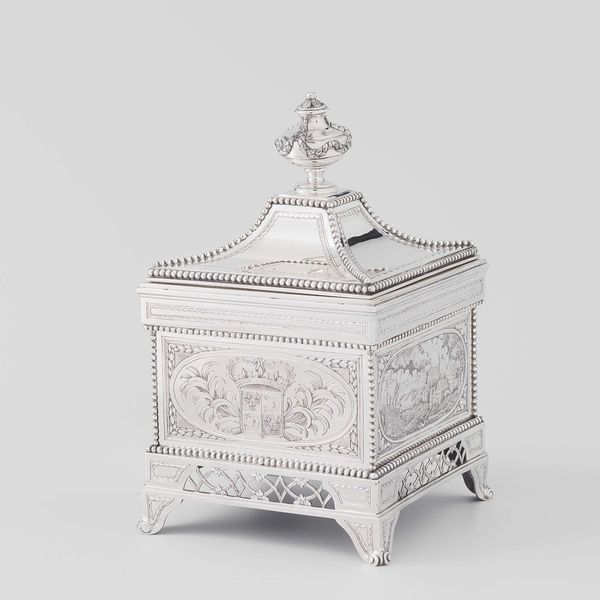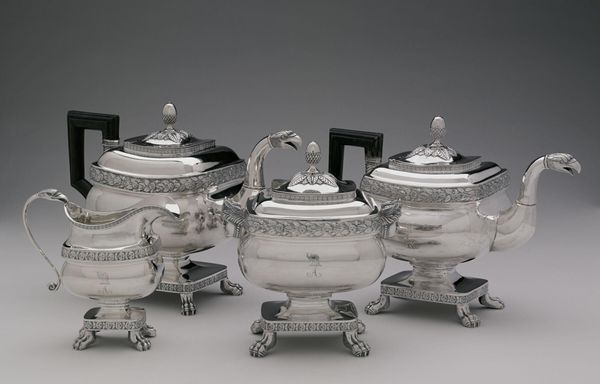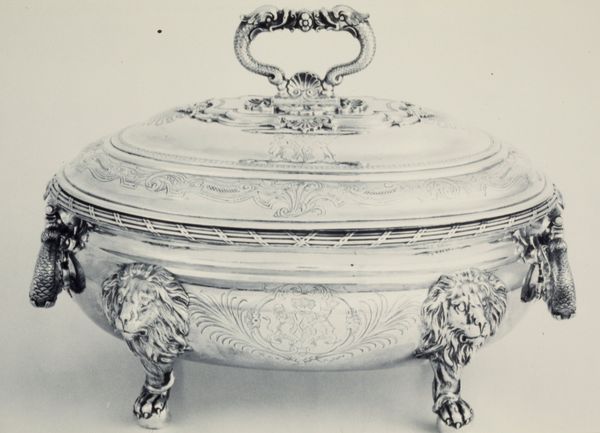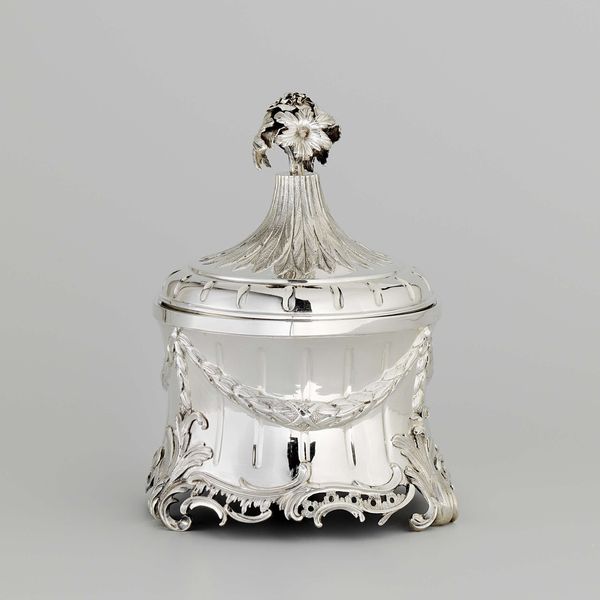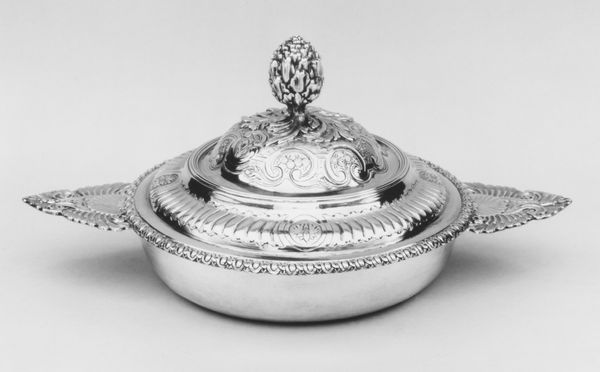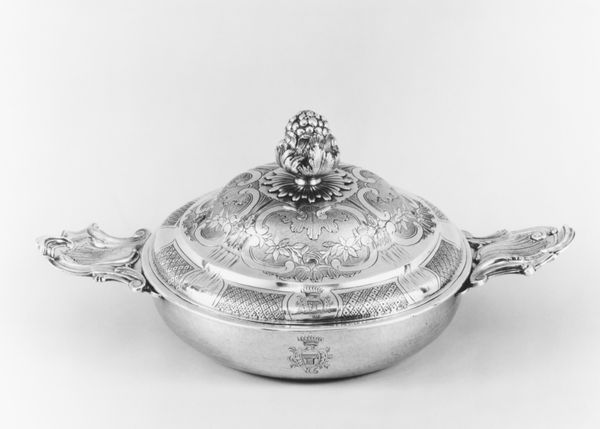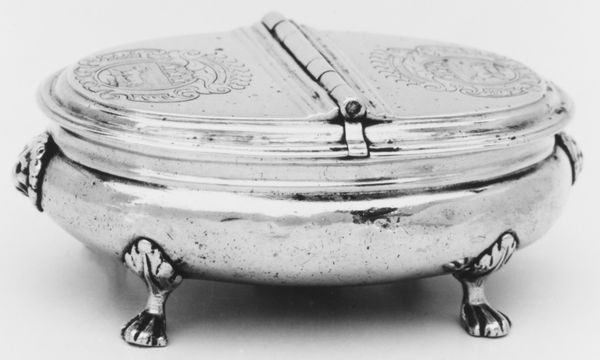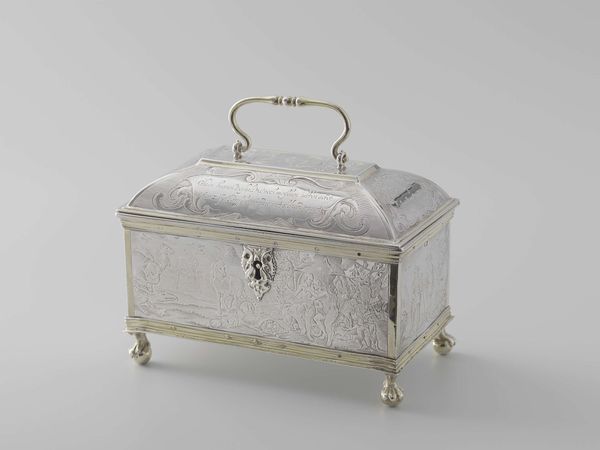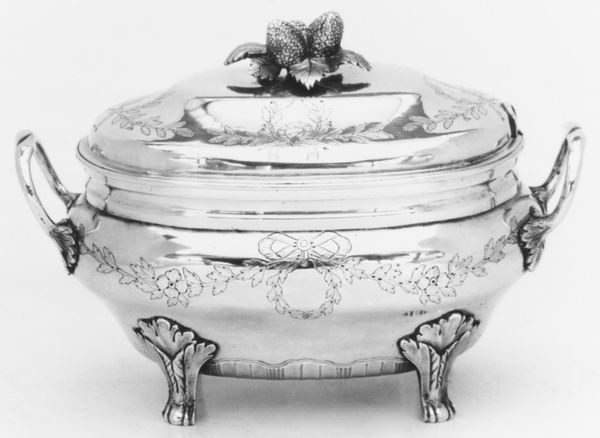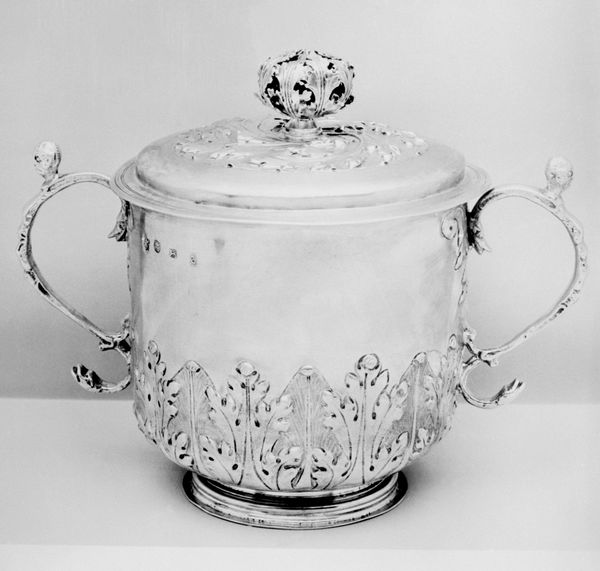
Dimensions: 8 x 9 x 4 in. (20.32 x 22.86 x 10.16 cm)
Copyright: Public Domain
Editor: Here we have “Case,” made of silver by William Vincent around 1768 or 1769. The level of detail is incredible. How do you read its elaborate Baroque style through its structure and materiality? Curator: A keen eye! It's compelling how Vincent articulates form through ornamentation. Note the florid, asymmetrical floral designs worked into the silver. How do these seemingly organic shapes function structurally? Editor: I see how the raised designs catch the light, almost camouflaging the hard lines of the case itself and lending a sense of ornate depth. It softens the boxy form, but also adds dimension through texture. Curator: Precisely. Observe how the chasing and repoussé techniques contribute to this effect. What’s notable is not merely the representation, but its function. Do you discern any intentional geometric principles in the dispersion of the design across the form? Editor: It feels intentionally balanced; the eye moves naturally across the surface. Though each side might differ in its particulars, a visual symmetry remains... it feels grounded despite all the surface adornment. Curator: An important observation. The formal dynamism lies in that tension between surface detail and structural harmony. The play of light on the material further complicates and enriches this interplay, don't you think? Editor: Definitely. I hadn't considered how much the visual texture adds to the overall design until now. Thanks! Curator: And thank you; your perspective enlivens one's approach to appreciating how a Baroque piece uses the properties of silver and its embellishment for formal ends.
Comments
No comments
Be the first to comment and join the conversation on the ultimate creative platform.
